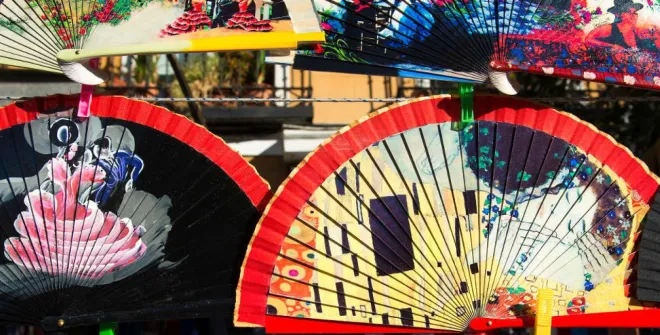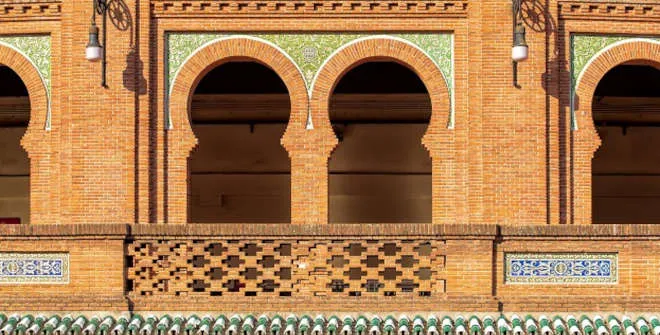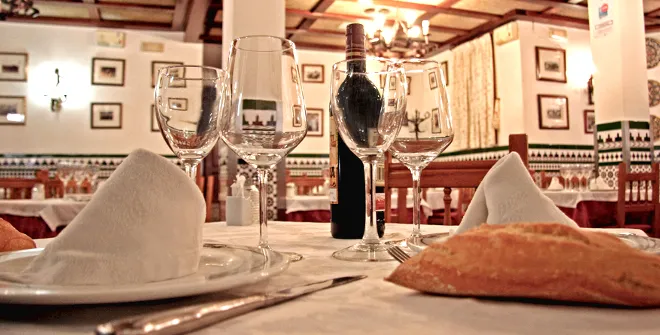Bullfighting
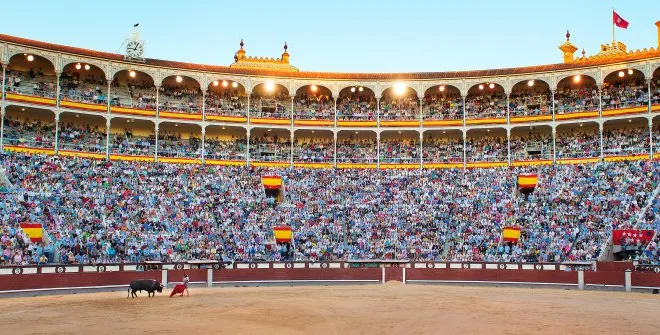
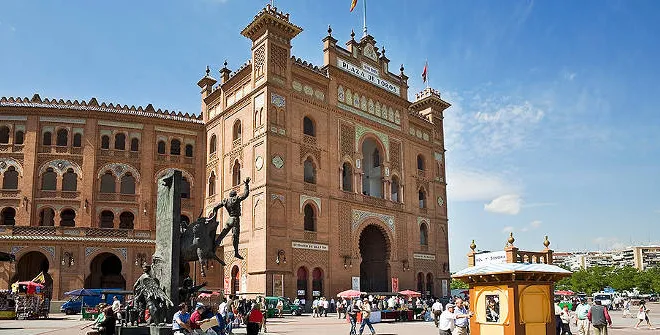
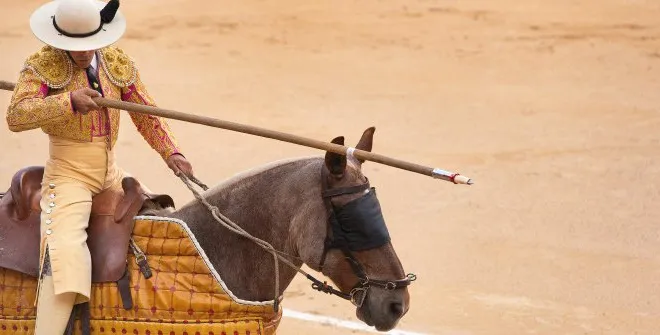
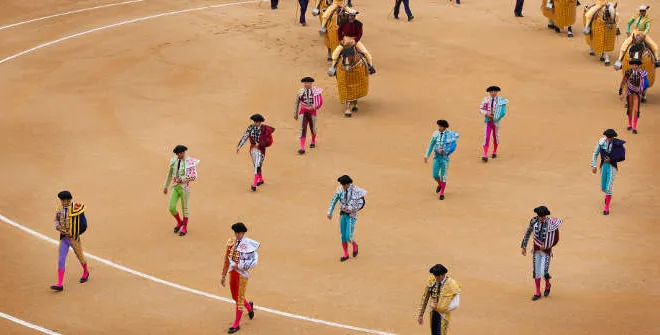
The world of bullfighting is, actually, a broad universe tourists usually know little about. Bullfights and toreros, or matadors, are the visible tip, but there’s much more to it: breeders, flamboyant bullfighter’s costumes (traje de luces), jargon, fiesta, posters and, of course, food.
The art of bullfighting is represented in fine prints by Goya, engravings by Picasso, poems by Lorca, and movies by Almodóvar. Open since 1931, Las Ventas Bullring houses Madrid’s Bullfighting Museum, whose collection includes interesting works of art and items tightly linked to the world of bulls and matadors. To many, the image of Spain is closely associated with bullfights – an art that became popular in the early twelfth century and is still very much alive.
Rabo de toro (oxtail) can be ordered in restaurants or bars with a connection to bullfighting as a tapa or a ración (dish to share). In the district where Las Ventas is and in central Madrid, there stand lots of establishments where you can try this tasty dish. Many of these taverns can be found in the Ventas area and in the centre, such as Casa Toribio, whose speciality is bull's tail and grilled bull's breasts.
It is worth mentioning the city's centenary restaurants and taverns that have been preparing the city's typical dishes for over a hundred years. Among them are Botín, considered the oldest restaurant in the world and known for its roast piglets, Casa Ciriaco in the centre of the Calle Mayor, the centenary tavern Casa Alberto and Casa Labra located next to the Puerta del Sol.
Madrid has the world’s most important bullring, Las Ventas, attracting large crowds and the leading matadors of the bullfighting season every year. One of the most remarkable buildings in Madrid, this bullring was designed by José Espeliú in the Neo-Mudéjar style and erected in 1929. With a 23,000-seat capacity, it’s the largest arena in Spain.
A tour of the bullring gives you an idea of what the bullfighter, the bull and the spectators might feel. It takes you across the patio de cuadrillas (where the bullfighters wait before the event), the patio de arrastre (where the bull is taken after the fight), the puerta grande or main gate, the ring itself and the stands. Las Ventas has welcomed the greatest bullfighters in history, and its stands have seen internationally renowned guests like Ernest Hemingway, Ava Gardner, Pablo Picasso, Jean Cocteau, Greta Garbo, Orson Welles and Sophia Loren.
If you’re interested in this deeply-rooted Spanish tradition, you may book the Las Ventas tour, a 45-minute guided tour of the entire building. You’ll learn about the history and legend of bullfighting, and understand what fighting a bull in the ring is like.
The tour includes an audio guide, available in eight languages (Spanish, French, English, Italian, Portuguese, German, Chinese or Russian). In addition, a video is screened that recreates the images and sounds of a real bullfight.
You’ll enjoy bullfighting more if you understand its codes. The corridas must follow very strict rules. Usually, six bulls and three toreros perform in a single afternoon; the first one to venture into the ring is the most experienced matador.
A corrida begins with a paseíllo, a parade of the toreros across the arena to the box of the president of the bullfight. In the first stage or suerte, known as ‘tercio de varas’, the bullfighter attracts the bull with his cape. Then, the picadores, assistants on horseback, stab the beast’s morrillo (neck) with a spear, forcing it to keep its head and horns low when it makes its charges.
In the second stage, the banderilleros (literally, flagmen) attempt to plant their barbed sticks on the bull’s shoulders. In the third and final stage, death, the matador asks the president for permission to kill the bull. He takes off his montera hat and does the faena or job with the muleta, ending it with a final blow or estocada for a quick and clean death.
The audience will wave a white handkerchief to petition the president, who can reward the fighter with one ear of the bull, two ears, or one ear and the tail. The president may also give permission for a salida en hombros, when the matador is carried on the shoulders of his supporters through the main gate. For ages, the spectators seating at number 7 of Las Ventas have been the most demanding.
May is the month of bullfights in Madrid. On 2 May, the city plays host to the corrida goyesca (Goyesque bullfight), whose performers wear nineteenth-century costumes. Starting a few days later and ending in mid-June, Las Ventas is the venue of Saint Isidore’s Bullfighting Season, when Madrid becomes the world capital of this traditional art.
For nearly a whole month, including Saint Isidore’s Day, on 15 May, Las Ventas welcomes the best matadors, novilleros (fighters of young bulls) and rejoneadores (fighters on horseback), as well as up-and-coming bullfighters making their debut in this huge bullring.
Cross your calendar for Saint Isidore’s Day; you’ll want to watch the fights featuring the biggest names in the bullfighting scene. Equally remarkable is the Corrida de la Prensa, organised since 1900 by the Madrid Press Association.
From then on until September, the bullring puts on fights every Sunday. The season comes to a close with the Feria de Otoño in mid-October. In winter – actually, all year round –, you can go to los toros at the Vistalegre Palace, a roofed bullring located in the district of Carabanchel.
At the end of August, San Sebastián de los Reyes celebrates its traditional annual festivities, especially known for their bullfighting events and the running of the bulls, which have earned them the nickname Little Pamplona . The town of Navalcarnero celebrates its traditional night time bull runs as part of its patron saint festivities, with the first recorded event of its kind dating back to October 1649. An act that takes place during the first fortnight of September in the Navalcarnero Bull Ring.
You might also like
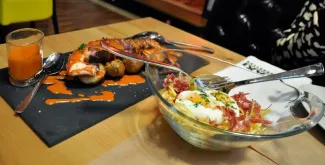
Out for Tapas in Madrid
Here’s a list of the best tapas bars in Madrid for a most enjoyable culinary experience.
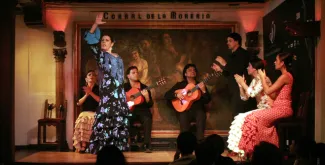
Flamenco
Discover the best spots in the city to enjoy Spain’s artistic expression par excellence.
